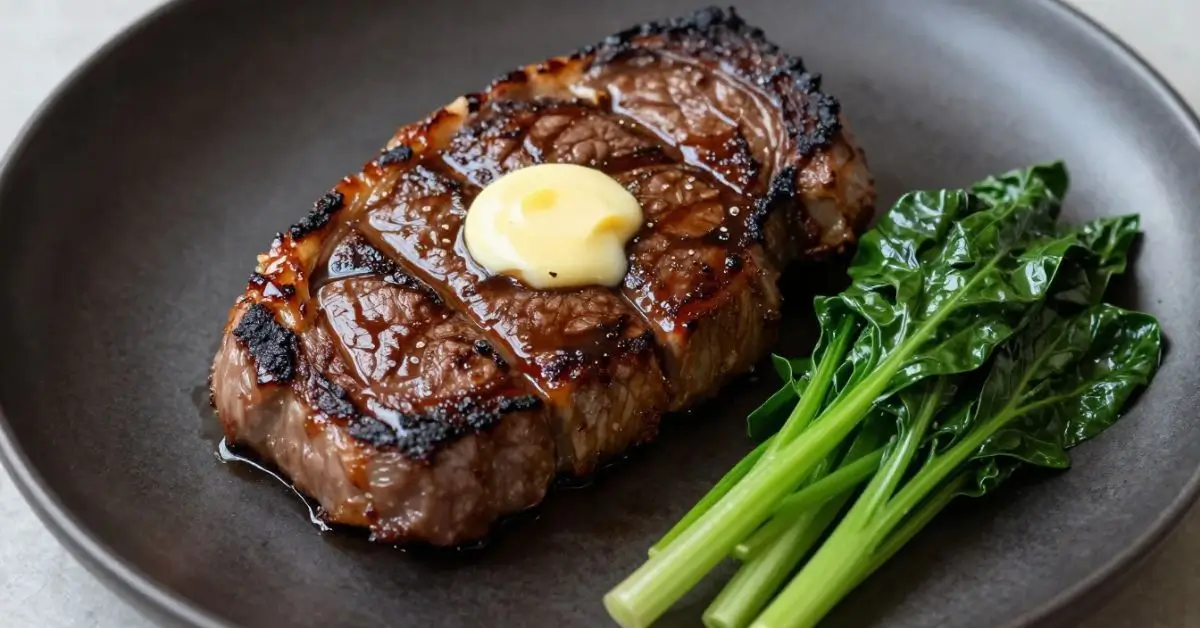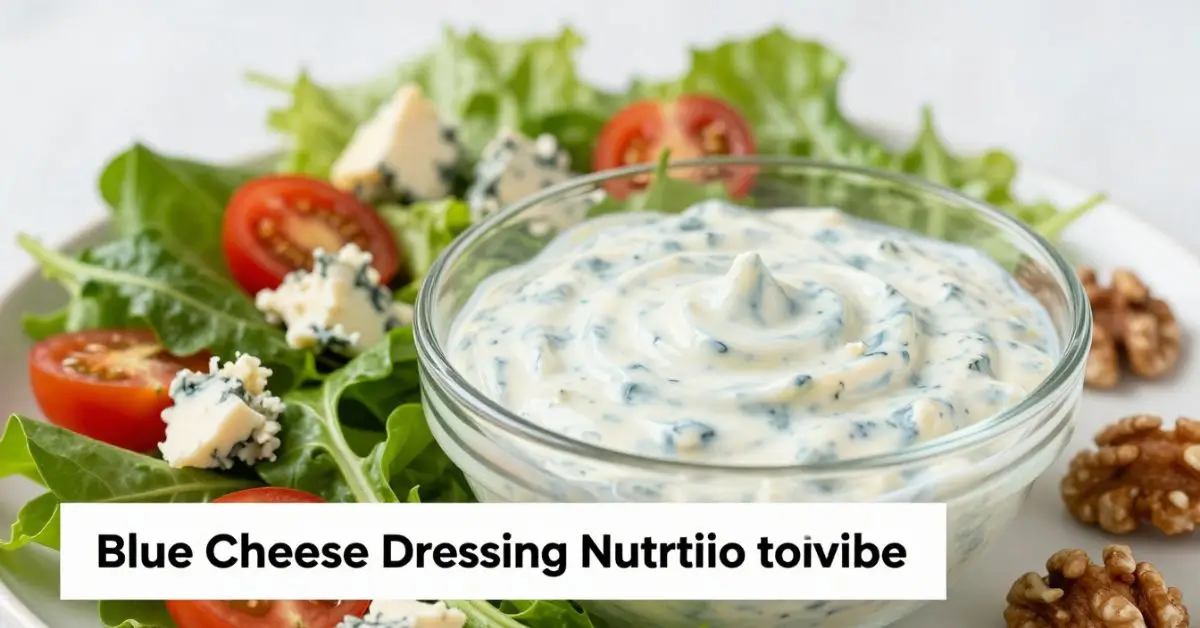FOOD
Is Sparkling Water Hydrating? Here’s What You Need to Know

Sparkling water has become a trendy alternative to sugary sodas and plain still water in recent years. From flavored varieties to naturally carbonated options, it’s easy to see why this effervescent beverage has gained so much popularity. But with the growing number of choices available, a question remains: Is sparkling water hydrating?
In this comprehensive guide, we’ll dive into the science behind hydration, how sparkling water compares to still water, and whether it can truly meet your hydration needs. We’ll also explore the potential drawbacks of sparkling water, including its effects on digestion and dental health. So, let’s pop the bubbles and get to the facts.
What is Sparkling Water?
Sparkling water, also known as carbonated water, is simply water that has been infused with carbon dioxide (CO2) under pressure. The result? Tiny bubbles of carbonic acid form in the water, giving it that signature fizz. There are various types of sparkling water, including:
- Naturally Carbonated: Water that naturally contains carbonation due to mineral springs or volcanic activity.
- Artificially Carbonated: Water that has been artificially carbonated by adding CO2 during manufacturing.
- Flavored Sparkling Water: This variety has added flavors, such as lemon, lime, or berry, but no added sugars or calories.
Some common names include La Croix, Perrier, and Schweppes, but there are countless brands available in the market today.
How Does Hydration Work?
Before we get into whether sparkling water is hydrating, it’s important to understand how hydration works. Hydration refers to the process of replenishing your body’s water balance. Water plays a crucial role in a range of bodily functions, including:
- Regulating body temperature
- Supporting digestion and nutrient absorption
- Transporting nutrients and oxygen to cells
- Removing waste from the body
The body constantly loses water through perspiration, urination, and even breathing. To stay hydrated, it’s essential to replace this lost water regularly. While plain water is the most straightforward way to stay hydrated, many people enjoy alternatives like sparkling water to keep things interesting.
Is Sparkling Water Hydrating?
Yes, sparkling water is hydrating! It’s made up of the same fundamental component as still water: H2O. Since it contains no added sugars or significant amounts of caffeine (unless flavored or enhanced), it is just as effective as still water for hydration.
In fact, a study published in the Journal of the International Society of Sports Nutrition found that carbonated water can hydrate the body just as well as still water. The researchers found that the carbonation didn’t affect the body’s ability to absorb and retain water. The process of carbonation doesn’t remove or significantly alter the water’s hydration properties.
Therefore, when you consume sparkling water, your body will absorb it in much the same way it absorbs still water, helping to keep you hydrated.
Comparing Sparkling Water to Still Water
While both sparkling water and still water hydrate you effectively, there are some notable differences between the two. Below, we compare the two on several key factors:
| Factor | Sparkling Water | Still Water |
|---|---|---|
| Hydration | Hydrates as effectively as still water. | Hydrates effectively, and is often the go-to choice for hydration. |
| Carbonation | Contains CO2, which may cause bloating in some people. | Free from carbonation, more easily consumed in large amounts. |
| Calories | Typically zero calories unless flavored with added sugars. | Zero calories, unless flavored. |
| Digestive Effects | Carbonation may aid in digestion for some, but can cause discomfort (e.g., bloating or gas) in others. | Easier on digestion with no bloating effects. |
| Taste | Offers a crisp, slightly tart taste, especially if flavored. | Neutral taste, often preferred for plain hydration. |
| Convenience | Often available in convenient, portable cans or bottles. | Readily available everywhere in all types of containers. |
| Effect on Teeth | Carbonic acid may contribute to enamel erosion over time. | No acidity; generally gentler on teeth. |
While sparkling water hydrates just as effectively as still water, it’s important to consider the carbonation, which can cause some digestive discomfort for certain individuals. Also, prolonged exposure to acidic carbonated drinks might have a slight impact on dental health, so it’s best to rinse your mouth with plain water after consuming sparkling water.
Potential Benefits of Sparkling Water
Aside from its hydration benefits, sparkling water may offer some additional health benefits:
- Supports Digestion: The carbonation in sparkling water may help stimulate digestion. Studies have shown that carbonated water can promote the release of gastric juices, which helps food break down more easily.
- Satisfies Cravings: For people trying to reduce their sugar intake, sparkling water offers a fizzy, flavorful alternative to sodas and other sugary drinks. It can also help curb sugar cravings, as the bubbles provide a sense of fullness.
- Encourages More Water Intake: Some people find that they drink more water when it’s carbonated because the bubbles make it more enjoyable. This can lead to better overall hydration.
- Zero Calories: Sparkling water, particularly when it’s not flavored, has no calories. It’s a great way to stay hydrated without worrying about adding extra calories to your diet.
- Better for Hydration Than Soda: Unlike soda, which is filled with sugars and artificial additives, sparkling water provides a hydrating option without the negative effects of high sugar content.
Drawbacks of Sparkling Water
While sparkling water has many advantages, there are also some potential drawbacks to keep in mind:
- Digestive Discomfort: Some people may experience bloating, gas, or burping after consuming carbonated beverages. If you have a sensitive stomach or suffer from conditions like irritable bowel syndrome (IBS), you might find that the carbonation exacerbates your symptoms.
- Dental Health: The carbonic acid in sparkling water can erode enamel over time, especially when consumed frequently. However, the effect is less damaging than sugary sodas. To mitigate this risk, drink sparkling water in moderation and rinse your mouth with plain water afterward.
- Potential for Added Sugars: Not all sparkling waters are created equal. Some flavored versions may contain added sugars or artificial sweeteners, which could offset their health benefits. Always check the label for ingredients to ensure you’re choosing a healthier option.
- May Not Be as Hydrating for Athletes: While sparkling water hydrates effectively, some athletes prefer still water for hydration during intense exercise because it’s easier to drink in large amounts without the potential for discomfort caused by carbonation.
Who Should Choose Sparkling Water?
Sparkling water can be a great choice for anyone looking to stay hydrated while enjoying something a little more exciting than plain water. It’s especially suitable for:
- People looking to reduce their intake of sugary beverages.
- Those who enjoy fizzy drinks but want to avoid sodas.
- Individuals who are trying to improve their digestion or satisfy cravings for something more flavorful.
However, it may not be ideal for people with digestive issues, such as bloating or IBS, as the carbonation could aggravate these conditions.
Conclusion
Is sparkling water hydrating? Yes, it is. Just like still water, sparkling water effectively hydrates your body, providing all the same benefits without added sugars or calories (in the unflavored varieties). While carbonation may cause discomfort for some individuals, it can also offer additional benefits like improved digestion and a satisfying alternative to sugary sodas.
As with any beverage, moderation is key. If you love sparkling water, drink it in moderation, and be mindful of any digestive discomfort or potential impacts on dental health. Choose unflavored or naturally flavored sparkling water to get the most benefits without added sugars, and always make sure to drink plenty of still water throughout the day to maintain proper hydration.
Whether you’re sipping it for hydration or simply enjoying the bubbly sensation, sparkling water can certainly be part of a healthy, balanced lifestyle. Cheers to hydration—bubbly or still!
FOOD
Balsamic Vinegar Nutritional Information: Is It Healthy?

Choosing the right condiment can make or break a healthy meal. If you’re watching calories, managing blood sugar, or simply trying to eat cleaner, you’ve probably wondered whether balsamic vinegar fits into your daily diet. Understanding balsamic vinegar nutritional information helps you enjoy its rich flavor without compromising your health goals.
This guide breaks down calories, sugar, carbs, ingredients, and real health benefits—so you can use balsamic vinegar with confidence.
What Is Balsamic Vinegar Made Of?
Balsamic vinegar is traditionally made from grape must, which is freshly crushed grape juice cooked and fermented over time. The aging process gives it its deep color and sweet-tangy flavor.
Common balsamic vinegar ingredients include:
Cooked grape must
Wine vinegar (in commercial versions)
Natural fermentation acids
Traditional balsamic vinegar uses no artificial sweeteners, while some store-bought versions may contain added sugars or caramel coloring.
Balsamic Vinegar Nutrition Facts (Per Tablespoon)
Understanding portion size is key. A balsamic vinegar serving size is usually 1 tablespoon (15 ml).
Balsamic vinegar nutritional information per tablespoon:
Calories: 14
Carbohydrates: 2.7 g
Sugar content: 2.4 g
Fat: 0 g
Protein: 0 g
Sodium: 2–5 mg
These low numbers explain why balsamic vinegar is popular among calorie-conscious eaters.
How Many Calories Are in Balsamic Vinegar?
If you’re tracking calories, you’ll be happy to know that balsamic vinegar calories per tablespoon are very low compared to creamy dressings.
Balsamic vinegar: ~14 calories
Ranch dressing (1 tbsp): ~70 calories
Caesar dressing (1 tbsp): ~80 calories
This makes balsamic vinegar one of the best low-calorie vinegars for salads and marinades.
Does Balsamic Vinegar Have Sugar?
Yes, but in small amounts. Since it’s made from grapes, balsamic vinegar sugar content comes naturally from fruit sugars.
Key points:
Sugar is naturally occurring, not refined
Amount per tablespoon is modest
Traditional versions often contain less added sugar
For most people, this small sugar amount fits easily into a balanced diet.
Balsamic Vinegar Carbs and Sugar Breakdown
Carbs in balsamic vinegar mainly come from natural sugars.
Total carbs: ~2.7 g per tablespoon
Net carbs: ~2.4 g
Because portions are small, many low-carb eaters still use it sparingly.
Is Balsamic Vinegar Healthy for Daily Use?
When used in moderation, balsamic vinegar can be part of a healthy daily diet.
Balsamic vinegar health benefits include:
Adds flavor without excess fat
Helps reduce the need for sugary dressings
Contains antioxidants from grapes
Low in sodium and calories
Health-conscious eaters often use it to enhance meals without guilt.
Is Balsamic Vinegar Good for Weight Loss?
Yes, when used correctly. Balsamic vinegar for weight loss works best as a replacement for high-calorie sauces.
Why it helps:
Very low calorie
Naturally enhances taste
Encourages portion control
Supports healthier eating habits
It won’t cause weight loss on its own, but it supports smarter food choices.
Can Diabetics Eat Balsamic Vinegar?
Many people ask, can diabetics eat balsamic vinegar? The answer is generally yes—in moderation.
Important considerations:
Small portions help prevent blood sugar spikes
Choose traditional or sugar-free versions
Avoid thick balsamic glazes
For most people, balsamic vinegar does not significantly affect blood sugar when used sparingly.
Is Balsamic Vinegar Keto Friendly?
Strict keto diets limit carbs heavily. While balsamic vinegar isn’t zero-carb, many keto followers use it in small amounts.
Not ideal for large servings
Acceptable in small portions
Apple cider vinegar may be a better keto option
So, is balsamic vinegar keto friendly? Yes—when used carefully.
Traditional Balsamic Vinegar Nutrition vs Regular
Traditional balsamic vinegar nutrition:
Longer aging process
Thicker texture
Richer flavor
Often less added sugar
Regular commercial balsamic vinegar:
Shorter aging
Thinner consistency
May include additives
Traditional varieties are often preferred for health and taste.
Balsamic Glaze Nutrition vs Vinegar
Many people confuse the two, but they’re very different.
Difference between balsamic vinegar and balsamic glaze nutrition:
Balsamic glaze: higher sugar, thicker, higher calories
Balsamic vinegar: lighter, fewer carbs, healthier
If nutrition matters, vinegar is the better everyday choice.
FAQ`s
Is balsamic vinegar healthy for daily use?
Yes, when used in moderation, it’s a low-calorie and low-sodium option.
Does balsamic vinegar affect blood sugar?
Small amounts typically have minimal impact, especially when consumed with meals.
What is the best low-calorie vinegar for salads?
Balsamic vinegar, red wine vinegar, and apple cider vinegar are all excellent options.
How much balsamic vinegar should I use per serving?
Stick to 1–2 tablespoons to keep calories and sugar low.
Is balsamic vinegar better than creamy dressings?
Yes. It contains far fewer calories, fats, and additives.
Final Thoughts
Understanding balsamic vinegar nutritional information makes it easier to enjoy bold flavor without unhealthy extras. With low calories, minimal sodium, and natural sweetness, balsamic vinegar is a smart choice for salads, marinades, and everyday meals—especially for health-conscious eaters, weight-loss followers, and those managing blood sugar.
✍️ Author Bio
James Walker is an experienced SEO content writer specializing in health, nutrition, and food-related topics. He holds an academic background in business and digital content strategy, with a strong focus on creating reader-first, search-optimized content.
FOOD
Beef Filet Mignon Nutrition for Keto & Low-Carb Diets

When you choose filet mignon, you’re usually thinking about tenderness and flavor. But for many health-conscious eaters, fitness enthusiasts, and home cooks, nutrition matters just as much. The good news? Beef filet mignon nutrition offers an impressive balance of high-quality protein, essential nutrients, and relatively low fat compared to many other steak cuts.
This guide breaks down calories, macros, vitamins, and health benefits—without the fluff—so you can decide if filet mignon fits your diet and lifestyle.
What Is Filet Mignon?
Filet mignon comes from the beef tenderloin, one of the leanest and most tender cuts of beef. Because this muscle does very little work, it contains less connective tissue and fat than cuts like ribeye or T-bone.
That tenderness also makes filet mignon popular with:
Health-conscious meat eaters
Fitness and macro-tracking diets
Low-carb, keto, and paleo followers
Beef Filet Mignon Nutrition Facts (Cooked)
Below is an approximate nutrition breakdown for cooked filet mignon (grilled or pan-seared), based on USDA data.
Filet Mignon Nutrition per 100g
Calories: ~210–220 kcal
Protein: ~26 g
Fat: ~12 g
Saturated fat: ~5 g
Carbohydrates: 0 g
Fiber: 0 g
This makes filet mignon a zero-carb protein source, ideal for low-carb and keto diets.
Filet Mignon Serving Size Explained
A standard filet mignon serving size is about 3–4 ounces (85–113 g) cooked.
Per serving, you’ll get:
High protein to support muscle repair
Moderate fat for satiety
No added sugars or carbs
Portion size matters, especially if you’re tracking calories or cholesterol.
How Much Protein Is in Filet Mignon?
Filet mignon protein per serving is one of its biggest strengths.
3 oz cooked filet mignon: ~22–24 g protein
100 g cooked filet mignon: ~26 g protein
This makes it a strong option for:
Muscle building
Weight maintenance
High-protein meal planning
Filet Mignon Fat Content: Lean or Fatty?
Many people ask: Is filet mignon lean or fatty?
Compared to other steaks, filet mignon is considered lean.
Steak Nutrition Comparison (Simplified)
Filet mignon: Lower fat, fewer calories
Sirloin: Lean, slightly firmer texture
Ribeye: Much higher fat and calories
While filet mignon does contain fat, it’s significantly less than ribeye, making it easier to fit into calorie-controlled diets.
Vitamins and Minerals in Filet Mignon
Beyond protein, filet mignon vitamins and minerals add serious nutritional value.
Key nutrients include:
Iron: Supports oxygen transport and energy levels
Zinc: Boosts immune health and metabolism
Vitamin B12: Essential for nerve function and red blood cells
Niacin (B3): Supports digestion and energy production
These nutrients make filet mignon especially beneficial for active individuals and those at risk of iron deficiency.
Is Filet Mignon Healthy?
Yes—when eaten in moderation.
Filet mignon is healthy because it:
Provides complete, high-quality protein
Contains no carbohydrates or sugar
Supplies essential micronutrients
Has less fat than many premium steaks
Healthfulness depends on portion size and cooking method. Grilling or pan-searing with minimal oil keeps calories in check.
Filet Mignon Nutrition for Keto and Low-Carb Diets
If you’re wondering does filet mignon have carbs?—the answer is no.
Carbs: 0 g
Protein-fat balance: Keto-friendly
Blood sugar impact: Minimal
This makes filet mignon an excellent choice for keto, paleo, and diabetic-friendly meals (informational use only).
Cooked vs Raw Filet Mignon Nutrition
You may notice differences between filet mignon nutrition cooked vs raw.
Raw values are lower in calories by weight
Cooking reduces water content, making nutrients more concentrated
Protein content remains high after cooking
Always rely on cooked values for realistic calorie tracking.
Filet Mignon and Cholesterol
Filet mignon cholesterol content averages around 70–80 mg per 3 oz serving.
For most healthy individuals:
This fits within balanced dietary guidelines
Pairing steak with fiber-rich vegetables supports heart health
Those monitoring cholesterol should focus on overall dietary patterns, not single foods.
Is Filet Mignon Good for Weight Loss?
Yes, filet mignon can support weight loss when eaten mindfully.
Why it works:
High protein increases fullness
Lower fat than many steaks
No carbs or added sugars
Stick to reasonable portions and avoid heavy sauces or butter-based toppings.
FAQ`s
How many calories are in filet mignon?
A cooked 3 oz serving contains about 200–220 calories, depending on fat content and cooking method.
Is filet mignon healthier than ribeye?
Yes. Filet mignon has less fat and fewer calories than ribeye while still providing high protein.
What are filet mignon macros?
Typical macros per 100 g cooked:
Protein: ~26 g
Fat: ~12 g
Carbs: 0 g
Is filet mignon USDA-approved nutrition data reliable?
Yes. Filet mignon nutrition USDA data is commonly used as a reference for beef tenderloin cuts.
Can diabetics eat filet mignon?
From a nutrition standpoint, filet mignon contains no carbs or sugar, making it suitable for blood-sugar-aware diets (informational only).
Final Thoughts
Beef filet mignon nutrition combines premium taste with strong nutritional value. It’s lean, protein-rich, carb-free, and packed with essential vitamins and minerals. Whether you’re lifting weights, tracking macros, or planning a balanced meal, filet mignon can fit comfortably into a healthy eating pattern when enjoyed in moderation.
Author Bio
Daniel Carter is a professional content writer specializing in food, nutrition, and health topics. He holds a bachelor’s degree in Nutrition Science and has several years of experience creating research-based, reader-friendly content for educational and lifestyle platforms.
FOOD
Sodium, Fat & Protein in Blue Cheese Dressing Explained

Blue cheese dressing is creamy, bold, and a favorite for salads, wings, and veggie dips. But if you’re watching calories, fat, sodium, or carbs, you might wonder whether it fits your diet. This guide breaks down blue cheese dressing nutrition in simple terms—so you can enjoy the flavor without second-guessing your choices.
Whether you’re tracking macros, following keto, packing family meals, or writing nutrition content, this article gives you clear, practical answers.
What Is Blue Cheese Dressing Made Of?
Understanding the ingredients helps explain its nutrition profile.
Common blue cheese dressing ingredients include:
Blue cheese crumbles
Mayonnaise or sour cream
Buttermilk or cream
Vinegar or lemon juice
Salt, garlic, and spices
Because it’s dairy-based and creamy, blue cheese dressing tends to be high in fat and sodium, especially in store-bought versions.
Blue Cheese Dressing Nutrition Facts (Per Tablespoon)
Here’s a general look at blue cheese salad dressing nutrition facts for a typical store-bought dressing:
| Nutrient | Approx. Amount (1 tbsp) |
|---|---|
| Calories | 70–80 kcal |
| Fat | 7–8 g |
| Saturated Fat | 1–1.5 g |
| Carbs | 1–2 g |
| Sugar | <1 g |
| Protein | ~1 g |
| Sodium | 120–180 mg |
Values vary by brand and recipe, but this gives a realistic serving reference.
How Many Calories Are in Blue Cheese Dressing?
Most people underestimate portions. While one tablespoon has about 70–80 calories, restaurant servings often use 2–4 tablespoons, quickly doubling or tripling calorie intake.
Tip: Measuring portions can make a big difference if you’re tracking calories or aiming for weight loss.
Blue Cheese Dressing Fat Content: What to Know
Blue cheese dressing gets most of its calories from fat.
Mostly fat-based calories
Contains saturated fat from cheese and dairy
Can fit higher-fat diets when portions are controlled
If you’re limiting saturated fat or cholesterol, moderation matters more than elimination.
Blue Cheese Dressing Carbs and Sugar Content
Good news for low-carb eaters:
Very low in carbs
Usually less than 2 g carbs per tablespoon
Minimal sugar unless sweeteners are added
This makes it appealing for keto and low-carb lifestyles.
Is Blue Cheese Dressing Keto Friendly or Not?
Yes—blue cheese dressing is generally keto friendly when eaten in moderation.
Why it works:
Low carb count
High fat content
Minimal sugar
However, always check labels for hidden sugars or starches in store-bought dressings.
Blue Cheese Dressing Sodium Levels: A Hidden Concern
Sodium is one of the biggest nutritional drawbacks.
Store-bought blue cheese dressing can be high in sodium
Multiple servings add up quickly
Not ideal for low-sodium diets
If sodium is a concern, homemade versions give you more control.
Homemade vs Store-Bought Blue Cheese Dressing Nutrition
Nutrition of Homemade blue cheese dressing often compares favorably:
Homemade advantages:
Lower sodium
Fewer preservatives
Adjustable fat and portion size
Store-bought advantages:
Convenient
Longer shelf life
Consistent taste
If health is a priority, homemade versions usually win.
Blue Cheese Dressing Nutrition vs Ranch
Both are creamy favorites, but they differ slightly:
Blue cheese dressing
Stronger flavor
Slightly higher fat
Similar calories
Ranch dressing
Often slightly higher sodium
Mild taste encourages overuse
Portion control matters more than which one you choose.
Is Blue Cheese Dressing Healthy or Unhealthy?
The honest answer: it depends on how you use it.
Blue cheese dressing can be:
✔ Enjoyed in small portions
✔ Suitable for keto and low-carb diets
✔ A flavor enhancer that prevents overeating bland salads
It becomes less healthy when:
Used in large amounts
Paired with already high-sodium meals
Eaten frequently without balance
Blue Cheese Dressing Nutrition for Weight Loss
You don’t have to avoid it completely.
Smart weight-loss tips:
Stick to 1 tablespoon servings
Pair with veggie-heavy salads
Choose homemade or light versions
Use it as a dip, not a pour-on sauce
Flavor satisfaction often helps reduce overall calorie intake.
FAQ`s
How many calories are in blue cheese dressing?
About 70–80 calories per tablespoon, depending on ingredients and brand.
Is blue cheese dressing healthy or unhealthy?
It can be part of a healthy diet when eaten in moderation, especially for low-carb or keto plans.
How much sodium is in blue cheese dressing?
Typically 120–180 mg per tablespoon, which adds up quickly with larger servings.
Can diabetics eat blue cheese dressing?
Generally yes, in moderation, since it’s low in carbs and sugar. Portion control is key.
What are the best low-calorie blue cheese dressing options?
Light or yogurt-based versions, or homemade recipes with reduced mayo and salt.
Final Thoughts
Blue cheese dressing nutrition shows that this creamy favorite isn’t off-limits—it just needs mindful portions. Low in carbs, high in flavor, and satisfying in small amounts, it can fit into many eating styles when used wisely.
Author Bio:
Written by Emma Williams, a professional content writer specializing in nutrition and healthy eating. She holds a degree in Food Science and has years of experience creating informative health and wellness articles.

 Cartoon5 months ago
Cartoon5 months agoUnlocking the Potential of Nekopoi.care: A Comprehensive Guide

 Game2 years ago
Game2 years agoExploring Aopickleballthietke.com: Your Ultimate Pickleball Destination

 BUSINESS2 years ago
BUSINESS2 years agoUnraveling the Mystery of 405 Howard Street San Francisco charge on Credit Card

 BUSINESS5 months ago
BUSINESS5 months agoWhat Companies Are In The Consumer Services Field

 HOME IMPROVEMENT2 years ago
HOME IMPROVEMENT2 years agoVtrahe vs. Other Platforms: Which One Reigns Supreme?

 ENTERTAINMENT1 year ago
ENTERTAINMENT1 year agoUnderstanding Bunkr Album: A Comprehensive Guide

 ENTERTAINMENT2 years ago
ENTERTAINMENT2 years agoThe Ultimate Guide to MP3Juices: Free Music Download

 TECHNOLOGY2 years ago
TECHNOLOGY2 years agoThe Guide to Using Anon Vault for Secure Data Storage
















